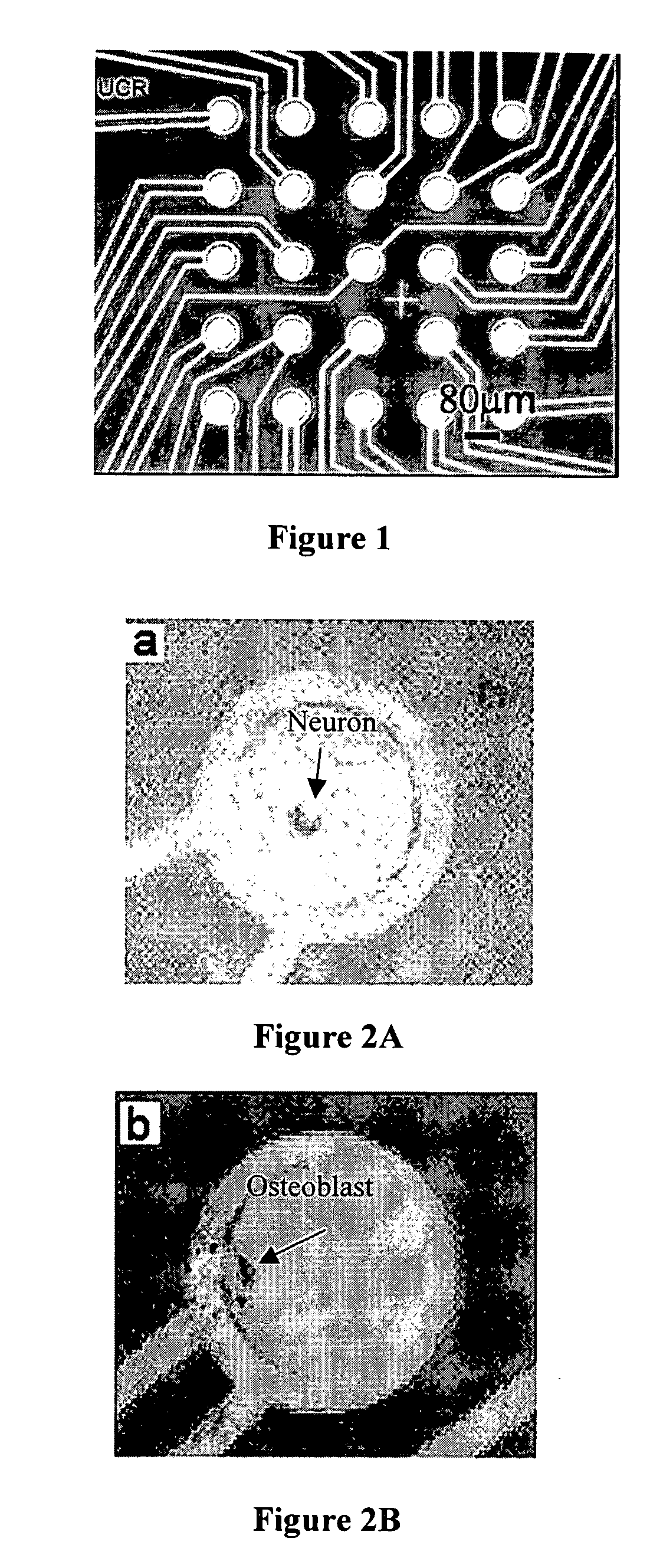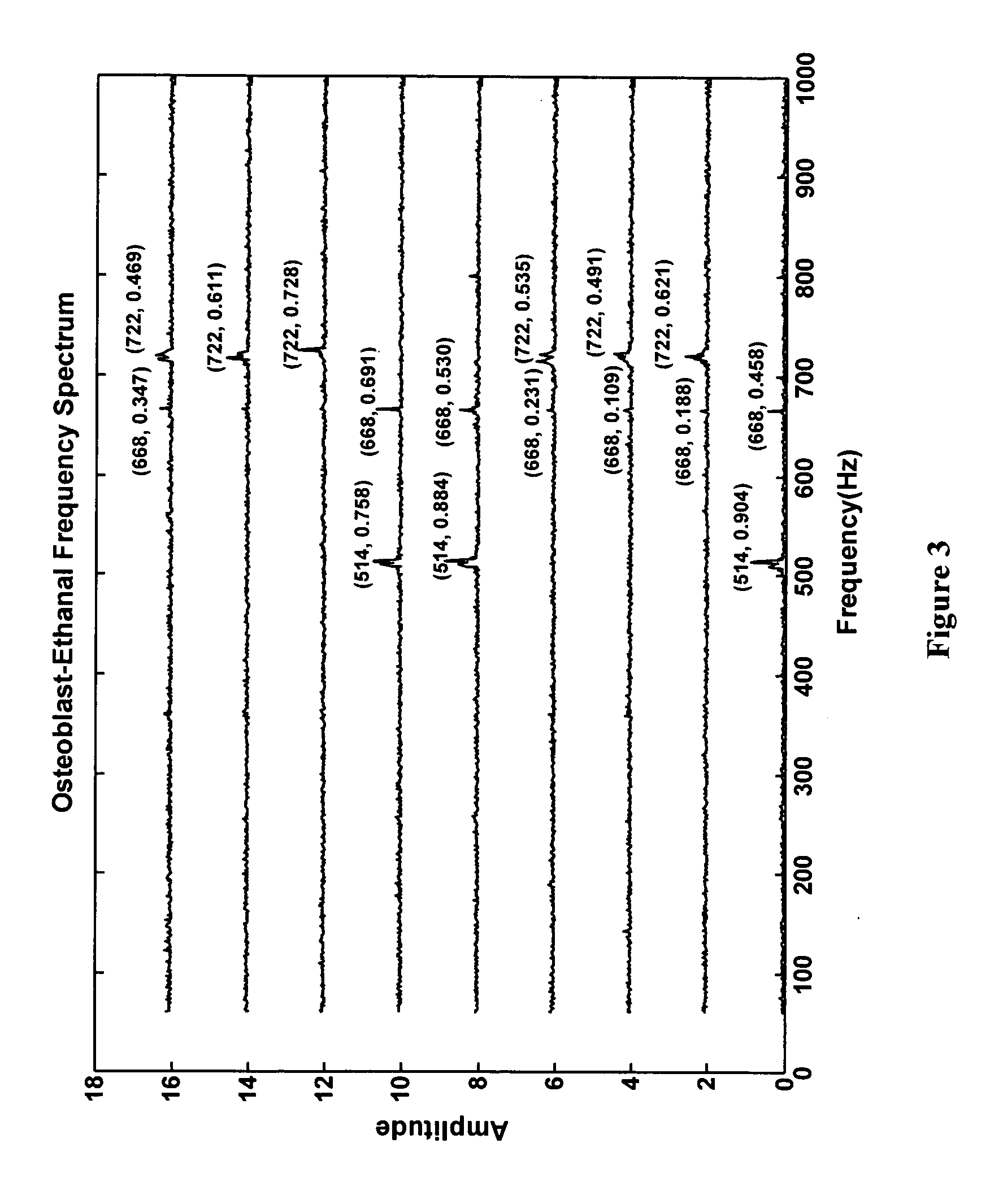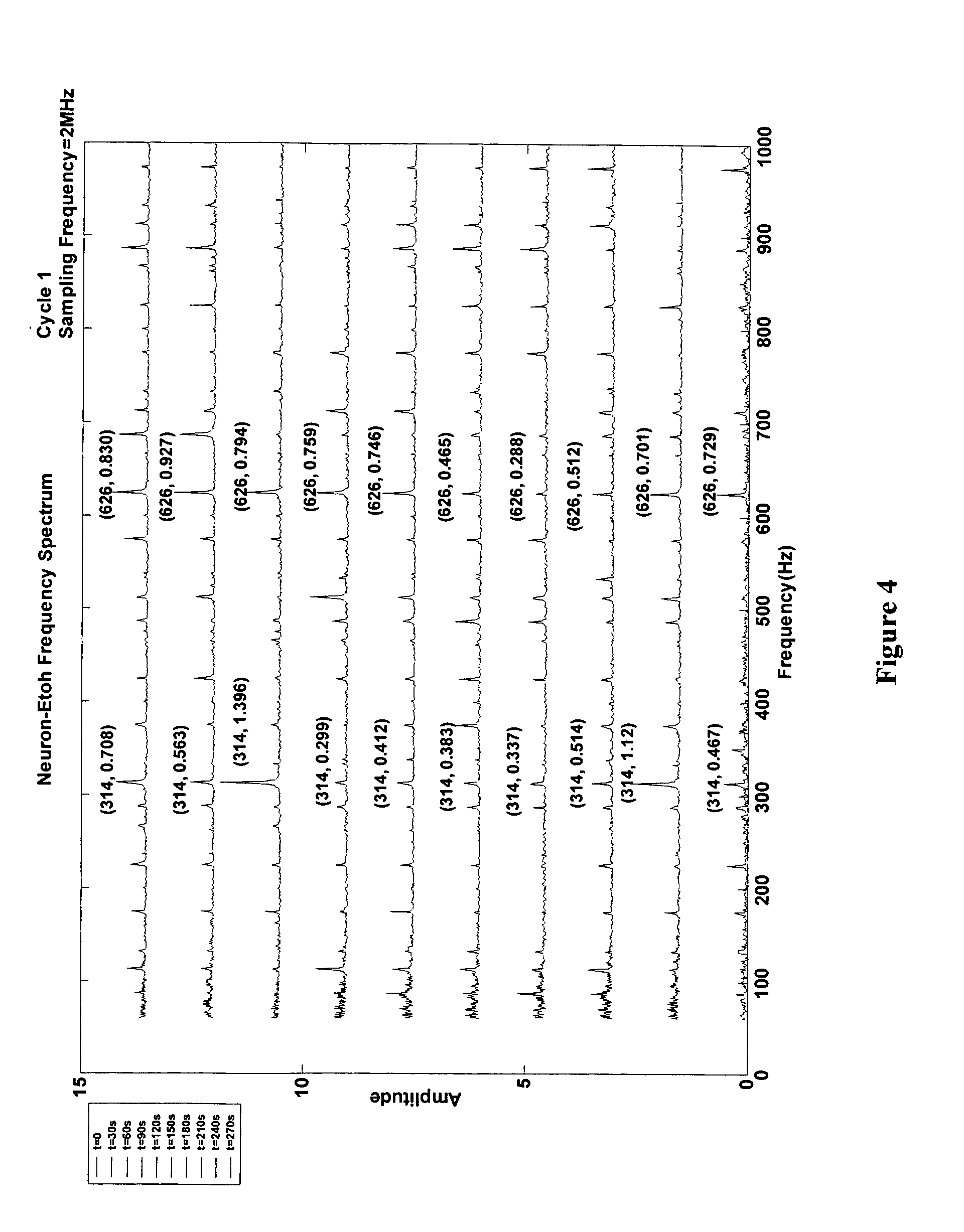Biosensors having single reactant components immobilized over single electrodes and methods of making and using thereof
a biosensor and reactant technology, applied in the direction of liquid/fluent solid measurement, material electrochemical variables, instruments, etc., can solve the problems of inability to reuse biosensors, and inability to detect unknown or engineered analytes, etc., to achieve rapid analysis of analytes and promote homogeneous mixing
- Summary
- Abstract
- Description
- Claims
- Application Information
AI Technical Summary
Benefits of technology
Problems solved by technology
Method used
Image
Examples
example 1
Single Cell Positioning
Neurons were separated from glial cells of a neuronal cell culture and later positioned on the electrodes using an alternating current field. Specifically, single neurons are separated from a co-culture of glial cells and positioned over microelectrodes using dielectrophoretic forces. Dielectrophoresis is the motion of particles caused by the dielectric polarization effects in non-uniform electric fields. Alternating current (AC) fields of a wide range of frequencies were used to generate the inhomogeneous field. Due to their highly dielectric membrane properties, cells experience dielectrophoretic forces under the influence of a gradient electric field. The dielectrophoretic force acting on a cell of radius, r, suspended in a medium of dielectric permittivity εm is given by
FDEP=2πr3εmα∇E2
where α is a parameter defining the effective polarizability of the particle and the factor ∇E2 is proportional to the gradient and the strength of the applied electric ...
example 2
Membrane Excitability and Stain-Free Chemical Sensing
Extracellular signals from individual neurons due to the action of a specific chemical analyte may be analyzed further to understand the chemical type and the cellular response relationship. Here, single neuron based sensor's response and its sensitivity is determined by statistical reconstruction and enhancement of the acquired experimental data. Each chemical was characterized by a unique SPV obtained from the integrated processing of the modified extracellular action potential in the frequency domain (FFT) as well as the time domain (WT).
This technique has been used for highly sensitive detection of a broad spectrum of chemicals ranging from behavior altering agents like ethanol, whose action is analogous to the effect of pentobarbitone and ketamine; environmentally hazardous agents like hydrogen peroxide, which affects the cell membrane in a manner that mimics carcinogenic chemicals like rotenone and ethylene diamine tetra...
example 3
Cascaded Sensing of Multiple Chemical Analytes
The sensing technique disclosed above was used to investigate the sensing of multiple chemical analytes interacting with a single neuron in a temporal manner also termed as “cascaded sensing”. This is used to establish a single neuron's function as a reusable sensor with the ability to distinguish between various chemical analytes, i.e. exhibit selectivity. The detection limits for individual chemicals act as the basis for determining the concentration of the specific chemical analytes used in cascaded sensing. Addition of the first chemical analyte approaching its sensitivity limit results in the acquisition of modified extracellular potential pertaining to the specific chemical analyte. The use of the chemical analyte close to its detection limit leads to the dissipation as well as metabolization of the chemical analyte within a single sensing cycle (180 seconds) that result in the reduction of the chemical analyte concentration belo...
PUM
| Property | Measurement | Unit |
|---|---|---|
| Diameter | aaaaa | aaaaa |
| Diameter | aaaaa | aaaaa |
| Diameter | aaaaa | aaaaa |
Abstract
Description
Claims
Application Information
 Login to View More
Login to View More - R&D
- Intellectual Property
- Life Sciences
- Materials
- Tech Scout
- Unparalleled Data Quality
- Higher Quality Content
- 60% Fewer Hallucinations
Browse by: Latest US Patents, China's latest patents, Technical Efficacy Thesaurus, Application Domain, Technology Topic, Popular Technical Reports.
© 2025 PatSnap. All rights reserved.Legal|Privacy policy|Modern Slavery Act Transparency Statement|Sitemap|About US| Contact US: help@patsnap.com



